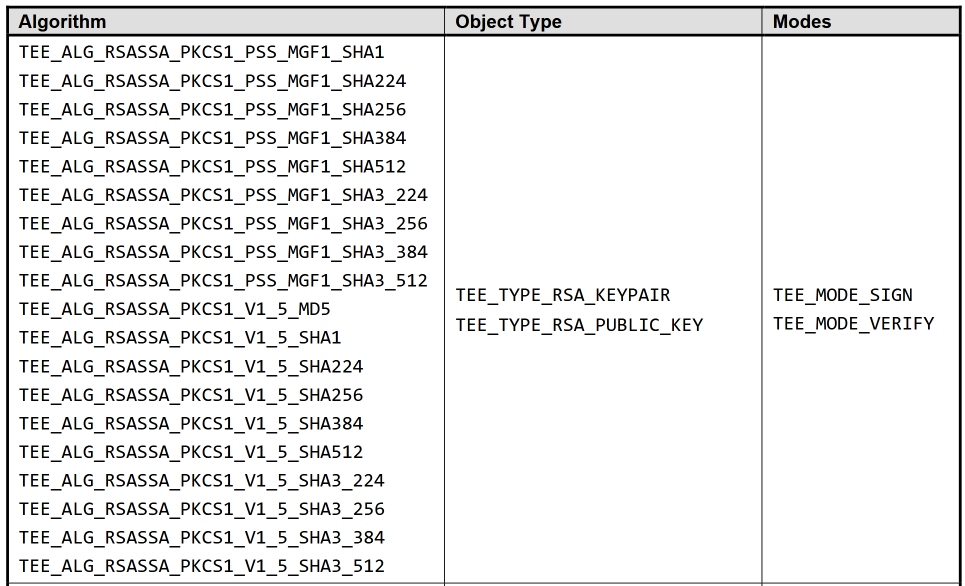Cryptographic Specifications
This section outlines the cryptographic components implemented by the Trusted Application (TA), including key types, encryption modes, hashing algorithms, and signature schemes.
Asymmetric Cryptography: RSA Key Pair (2048-bit)
Purpose: Provides digital signatures to authenticate the TA’s identity.
Generation: Created using a hardware-based true random number generator (TRNG).
Storage: Securely stored in Trusted Execution Environment (TEE) persistent storage.
Access Control: The private key remains sealed within the TEE and is never exposed externally.
Lifecycle: Generated during the TA’s initial startup via TA_CreateEntryPoint(). Persists across system reboots.
Symmetric Cryptography: AES Key (256-bit)
Purpose: Used for encrypting and decrypting JSON data handled by the TA.
Mode: AES in Counter mode (AES-CTR), enabling parallelizable encryption.
Initialization Vector (IV): A fresh 128-bit (16-byte) IV is randomly generated per encryption operation.
Storage: Persistently stored in secure storage within the TEE.
Lifecycle: Generated once on the TA’s first load. Reused for all future store and retrieve operations.

Hashing: SHA-256
The SHA-256 hash function is used in several operations:
Generating unique identifiers for encrypted data
Ensuring data integrity during transmission and storage
Hashing the TA UUID for identity attestation
Digital Signatures: RSA-PSS
The TA uses RSA-PSS (Probabilistic Signature Scheme) for secure digital signing:
Enhances signature uniqueness by adding a random salt
Conforms to modern cryptographic standards (PKCS#1 v2.2)
Used to sign the TA UUID hash for remote attestation
